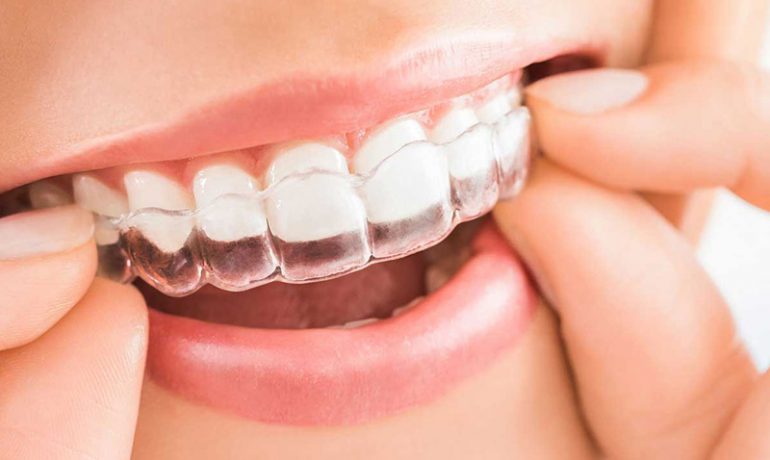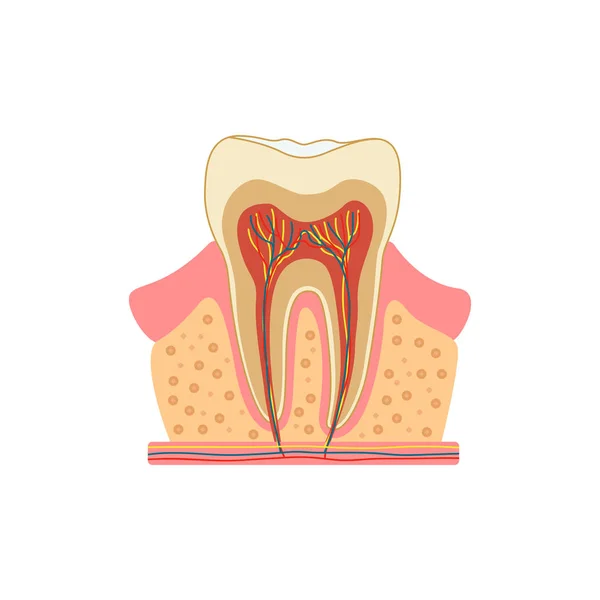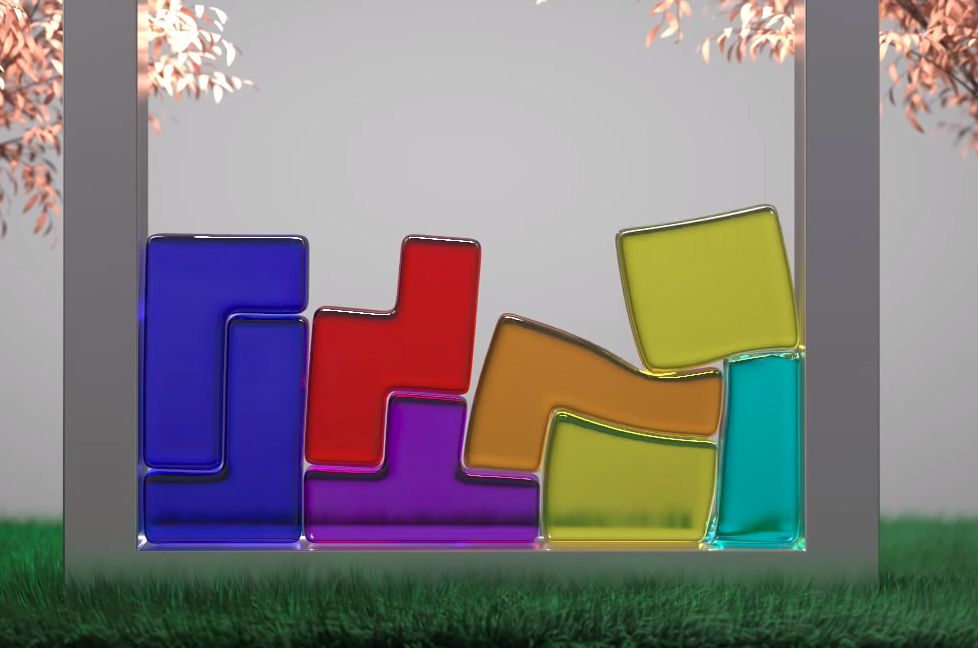Invisalign of the Heart
For the second time in my life, I am undergoing the tedious and painful experience of tooth re-alignment. As a coping mechanism, why not pontificate on how Invisalign can serve as a spiritual allegory?
There are worse ways to cope, I suppose.

After completely forgetting the horrors of middle school braces, over the past several years I allowed myself to lose my retainer and let my teeth slip—just enough to warrant a few months of Invisalign to get things on the right track. Hearing from my orthodontist the options, Invisalign seemed like an effortless remedy for the consequences of my past neglect: transparent plastic, removable at any time, no pain from popped wires, no eating restrictions… Life would be great!
But as any teenager or adult with recent orthodontic treatment will tell you, Invisalign is not a walk in the park, especially jumping into the process “fresh” without recent braces or retainer use.

Your teeth are always slightly mobile: if not, how would they move out of alignment in the first place? The roots sit in a container of dense cartilage, similar to the material that shapes your nose. No matter how tough, however, cartilage is still movable. Natural chewing, clenching, and activity will put pressure on the teeth that allow the cartilage to shift, break down, and re-form over the course of years.
Orthodontic treatments all capitalize on this same flexibility when putting one’s teeth back in place. They put constant pressure on the teeth to move them in new directions, out of the way of others and into two perfect rows of freshly-shorn sheep*. Furthermore, this pressure is applied in an extreme and optimal way, to expedite the alignment process and overcome the natural pressures of biting and chewing.
Invisalign in particular is a coveted form of treatment:
- It can be removed at any time
- It is transparent: nearly invisible to onlookers
- Breakages or malfunctions do not typically cause pain (unlike popped wires from braces)
So, given all of those benefits, who am I to complain?
Upon forking over the several hundred dollars for the retainer and popping it in, I enjoyed a about five seconds of satisfaction with my purchase before the buyer’s remorse started to kick in.
I first noticed how difficult it was to speak properly with this plastic in my mouth. I suddenly had a mild and annoying lisp, a speech impediment that wasn’t quick to disappear with a bit of practice. You can only imagine my embarrassment at work, attempting to lead meetings about “cruthial bithnith dethithions” and constantly apologizing for my lisp.
If Invisalign is supposed to be invisible, why must I preface every conversation with an apology about their existence?
The pain kicked in after about eight hours. The tooth aching was anticipated: I knew that moving teeth around would create some adjustment pains. The unexpected issue was the dreadful irritation and cutting of my gums and tongue. For nearly a week, the flesh in my mouth revolted against the foreign plastic encasing my teeth, becoming covered in scrapes and sores rendering even soft foods painful to consume. In vain I acquired emery boards to sand down the “sharp” edges of the retainer, only to realize that the edges were already perfectly smooth: my mouth simply hated the mere presence of the equipment.
My lips were constantly chapped, dining was an excruciating ordeal, and my every word reminded the whole vicinity of the new operation taking place on my teeth.
“Surely things got better after that first adjustment period! Folks wear these for several years: it can’t be that bad!”
Yes, the initial pain did recede after that first week. My lisp was no longer noticeable, my tongue learned not to scrape against the plastic, and my jaw adjusted to this new pressure.
However, I still looked upon the procedure with a fair amount of antipathy. The pain was gone, but my lifestyle was still significantly impacted.
You can eat or drink nothing but water when your equipment is in. Nothing else is acceptable, even sparkling water. For every meal, snack, or drink, at home or on the road, for fuel or for social occasions, you must remove your Invisalign with clean hands and stow it in your case. By consequence, you must also carry your case everywhere—unless you want to wrap your retainer in bathroom paper towels and leave them out on the table with you.
When is the last time a tin of chewing tobacco bulging out of your pocket was in style? Yeah, I can’t remember either.
You may counter, “but at least you have the flexibility to remove it whenever you want!” Ah, but the small print in the contract says otherwise: Invisalign must remain in your mouth for 22 hours a day in order to be effective. Yep, you read that right.
“Ah, but two hours across three meals, that’s 40 minutes a meal, you’re fine!”
How many people do you know that only eat at mealtimes, consuming nothing but pure water at all other points of the day? No snacks, no coffee or tea, no Friday-evening happy hour with friends. Especially when considering someone with a fairly active lifestyle, you simply can’t nourish yourself appropriately getting all of your calories in just three meals.
And remember, every single time you remove and replace your Invisalign, you must first clean your teeth of any food or plaque that has built up as a result of your indulgence. Twice-a-day dental hygiene doesn’t cut it anymore, because the plastic barrier around your teeth prevents your saliva and tongue from doing their natural, gradual decomposition and cleanup of lingering food. You’re pressing all of that stuff directly against your enamel otherwise.
So I looked at the life I had made for myself, and felt thoroughly disappointed. In the evenings I’d inspect my teeth, compare them to Reddit horror stories, and think to myself, “I’m really not that bad off! There’s one bottom front tooth that’s slightly out of alignment. Do I really need to spend hundreds of dollars to move it back? Not to mention the hours of time and mental effort it takes to maintain this practice. No one sees that tooth when I smile. It’s not causing any toothaches. Why not just get a nighttime retainer and call it a day?”
It struck me, as I was making these compromises with myself, how much my petulance sounded like the complaints I’d often express to God during rough patches in other areas of my life. In fact, almost everything about Invisalign seemed quite apropos to compare with the circumstances God uses to grow us.
God, create a clean heart for me and renew a steadfast spirit within me.
– Psalm 51:10
It’s a lovely prayer. We recognize the depth of our own transgression, our lack of alignment with God, and we say, “I’m sorry! Please forgive and repair me!” Or, perhaps there was no acute wrongdoing, but we see things in our walks with God that could be better, and we ask him to work in us and transform us into his image.

Cool! God gladly accepts our request for redemption and sanctification. He crafts a nifty little plastic mold that is almost the same shape as our heart, slaps it in place, and says “For best results, wear it for a minimum of 24 hours per day.”
We’re excited for about five seconds. Then we try to do some of the most basic things that used to fill our lives (speak! eat!), and find that everything has become unnatural, uncomfortable. All of our old activities now have this ball and chain tied to them.
Just like Invisalign, sanctification is not often seen or recognized by our peers, yet it is a constant presence (dare I say, inconvenience) in our own lives. Folks notice the side effects: for Invisalign, “where did that lisp come from?” or, “are you on a new diet?” and for sanctification, “you used to be much funnier! Relax!” or, “remind me again when you became a sober curmudgeon?”
You just can’t stand having it on all day, so you take it off once in a while for relief from the discomfort. Looking at your heart, you start thinking, “what the heck? It’s not really that bad! Certainly not as rough as some folks I see on Reddit. This whole process isn’t even necessary. I’m wasting my time and mental health over petty details: let me just be satisfied with who I was.”
Watching your heart hour by hour, and day by day, you feel the pain but you don’t see any improvement at all. You still feel drawn to all of your old life—even more so, now that the habits are in the spotlight with this new procedure—and the aligner is only causing unnecessary pain.

At regular intervals, God shows up with a new alignment mold for you to wear. Oftentimes, it pushes against portions of your heart that seem completely unrelated to the task at hand. It seems that he’s never just satisfied with a surgical fix of the one issue you originally asked about. He’s playing some divine game of seven-dimensional Tetris with the pieces of your heart, with an ostensible disregard for even a bit of your own comfort.
But God reminds you that this process was never promised to be easy. It would come with plenty of pain, much of which you wouldn’t understand in the moment. It’s a long-term commitment—a commitment of a lifetime—and requires patience and perseverance, even when progress seems slow or you find yourself backsliding. The adjustments being made are numerous, diverse, and tiny: every one of them serves a purpose, even if you can’t see their significance in the moment (or even see the impact at all). Faithfulness and trusting the story will result in a better version of yourself, though: a version closer to the divine image in which you were created, closer to the God whose faithful love has opened a door for you to enjoy an eternal relationship with him.
God never forces the issue: just like it was your choice to start the treatment, you can always say “enough” and throw away the aligner. Who knows: maybe you’ve learned enough good habits at that point to keep your heart healthy for a couple weeks, or a month or two. I know from experience: it feels pretty good to walk around with nothing “bothering” my teeth or soul.
But I also know that freedom only lasts for so long. If God isn’t straightening my heart (or the aligner isn’t straightening my teeth), the world has plenty of pressures that take me any number of different directions.
Now, is my orthodontist God? Certainly not! Nor do I think I’ll be making transformative spiritual changes based on this little analogy. But, at the very least, it has given me a bit more strength to continue wearing these darn plastic sheets in my mouth!
